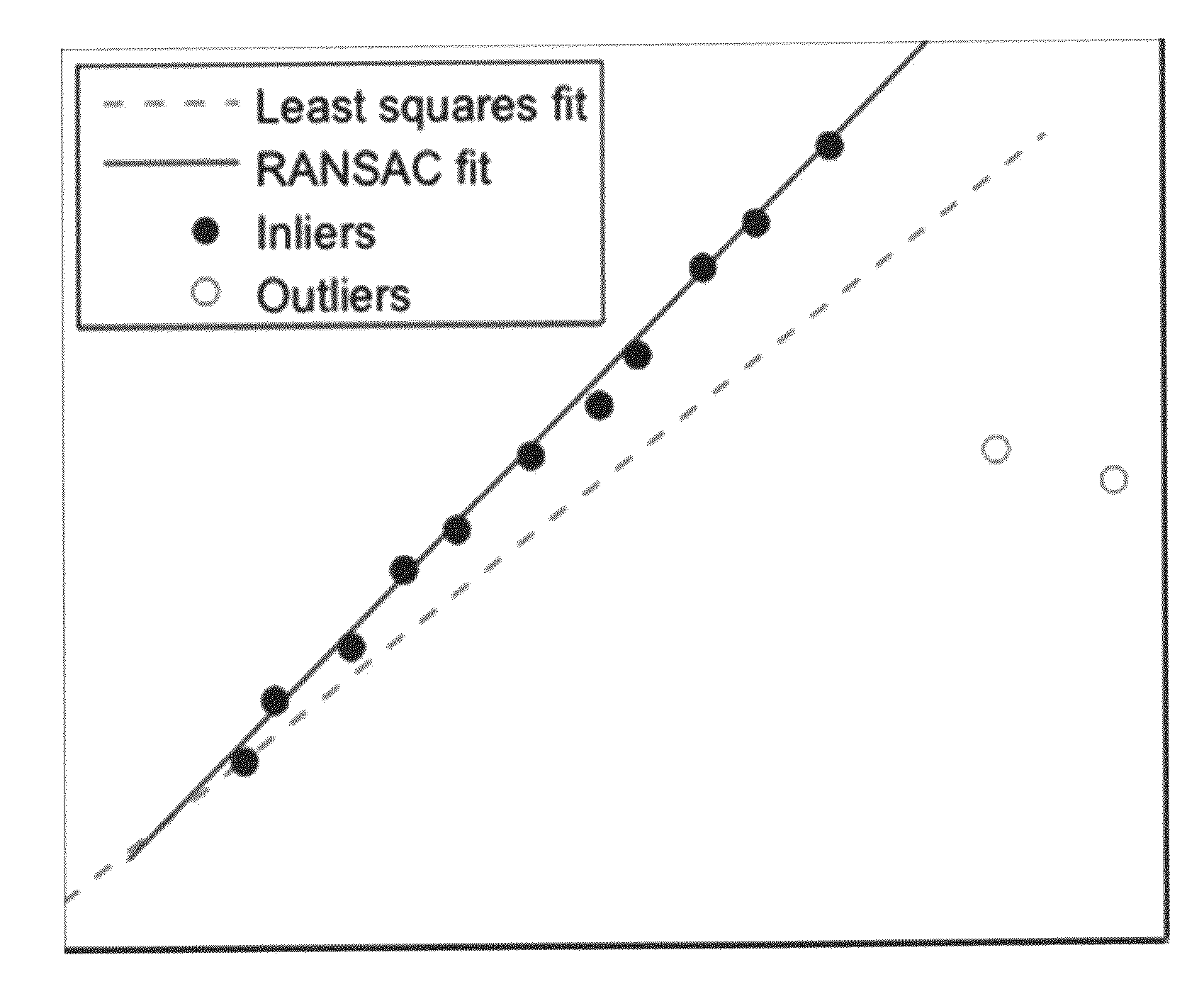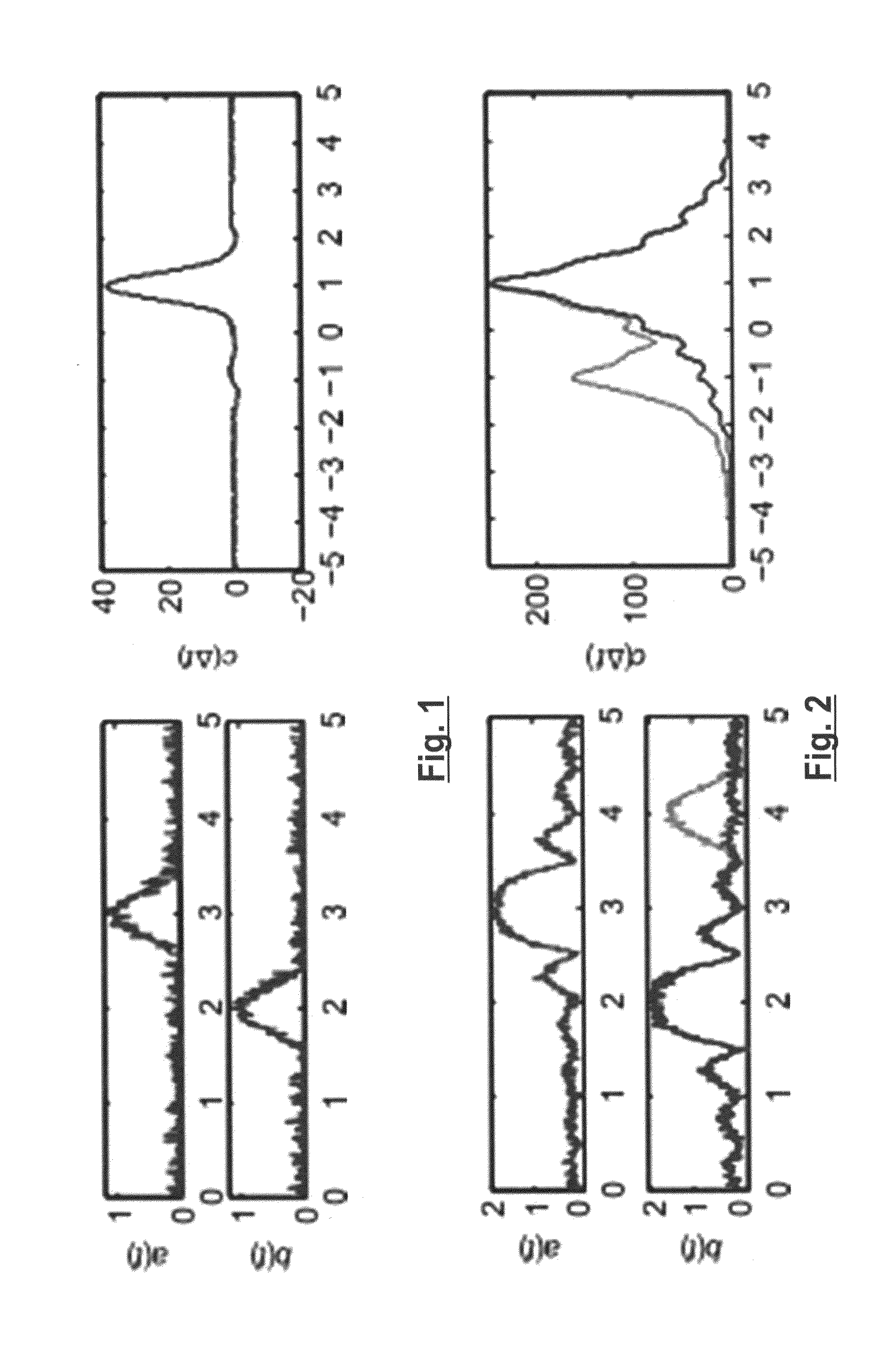Method and an apparatus for performing a cross-calculation
a cross-calculation and apparatus technology, applied in the field of methods and apparatus for performing cross-calculation, can solve the problems of prone to failure and more severe effects of non-stationary disturbances, and achieve the effect of reducing the influence of nois
- Summary
- Abstract
- Description
- Claims
- Application Information
AI Technical Summary
Benefits of technology
Problems solved by technology
Method used
Image
Examples
Embodiment Construction
[0090]In the following embodiments of the invention will be described. First of all, however, some terms will be defined.
[0091]PCCF—partial cross-correlation functions
[0092]RANSAC—Random Sample Consensus
[0093]M-Estimators—are a broad class of estimators, which are obtained as the minima of sums of functions of the data
[0094]LMedS—Least Median of Squares
[0095]According to one embodiment there is provided a novel approach to make cross-correlation robust to sporadic disturbances like the ones discussed above. The approach is especially suitable for those cases where major parts of the signals are free from such errors, and only some, locally limited portions are corrupted. In such cases then the input data can hence be divided into good and bad segments, and one may use an established outlier removal strategy such as like for example the ransac algorithm to make this separation.
[0096]Random Sample Consensus (ransac) is an iterative algorithm to robustly fit a model to a set of measure...
PUM
 Login to View More
Login to View More Abstract
Description
Claims
Application Information
 Login to View More
Login to View More - R&D
- Intellectual Property
- Life Sciences
- Materials
- Tech Scout
- Unparalleled Data Quality
- Higher Quality Content
- 60% Fewer Hallucinations
Browse by: Latest US Patents, China's latest patents, Technical Efficacy Thesaurus, Application Domain, Technology Topic, Popular Technical Reports.
© 2025 PatSnap. All rights reserved.Legal|Privacy policy|Modern Slavery Act Transparency Statement|Sitemap|About US| Contact US: help@patsnap.com



